Potential ecological imbalance
Storyboard 
Early Warning System of potential ecological imbalances
ID:(1892, 0)
The problem is already here
Image 
It is always said that we are 5 minutes from 12 when in general the systems are already compromised and it is necessary to recognize the degree of progress of the problem.
In the same way, we must know how the problem is developing in order to take the measures to control or mitigate it.
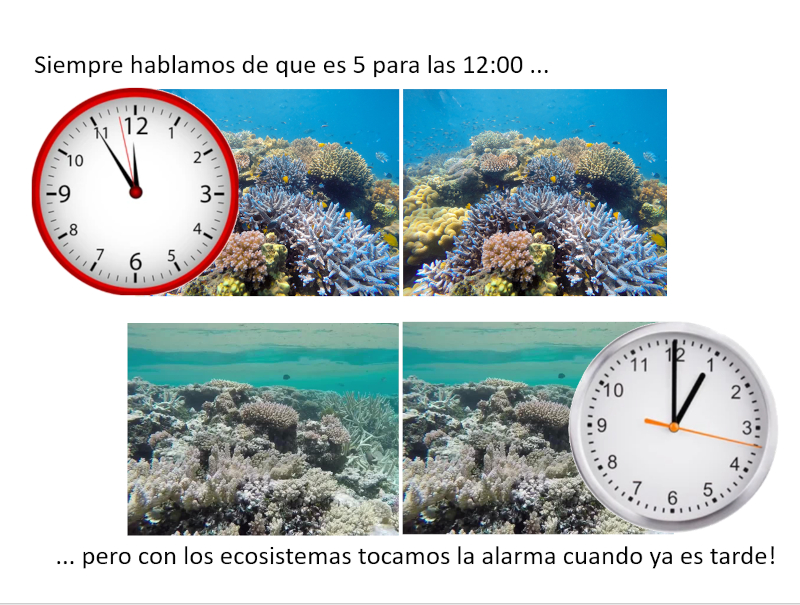
ID:(14254, 0)
Forecast Limitations
Image 
We focus on the long-term forecast and forget that a short-medium-term forecast is required to recognize the eminent dangers we face.
Only today we started to work on the aspects of biochemical and carbon cycles.

ID:(14255, 0)
Carbon cycle
Image 
Carbon is the key element linking warming itself, human activity, and biological systems.
For this reason, its simulation is key both for the forecast of climate change and for understanding the effects on ecosystems.
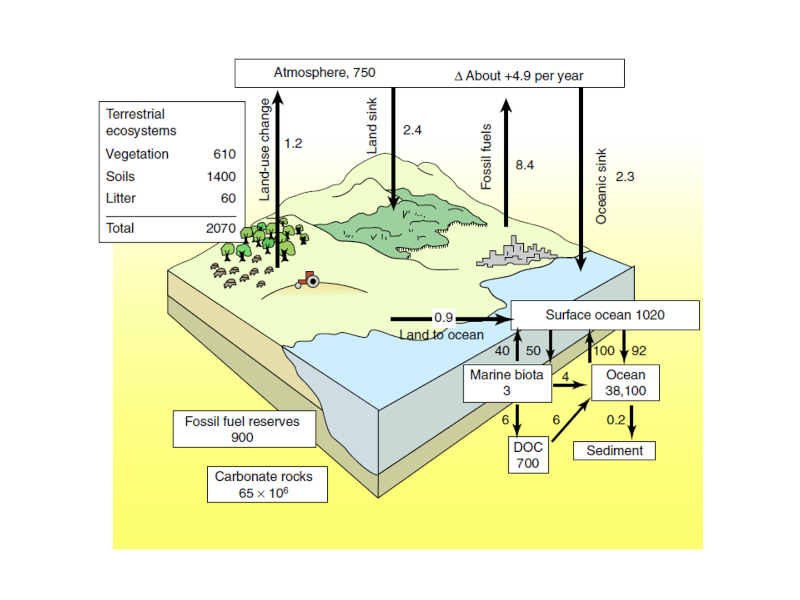
ID:(14256, 0)
The need to forecast
Image 
For this reason, it is key to predict where and when it can be assumed that imbalances in ecosystems will arise in order to be able to act in a timely manner.
The forecast should include
- climatic situation in the short to medium term
- effects on environmental parameters
- ecosystem reaction
- identification of potential imbalances
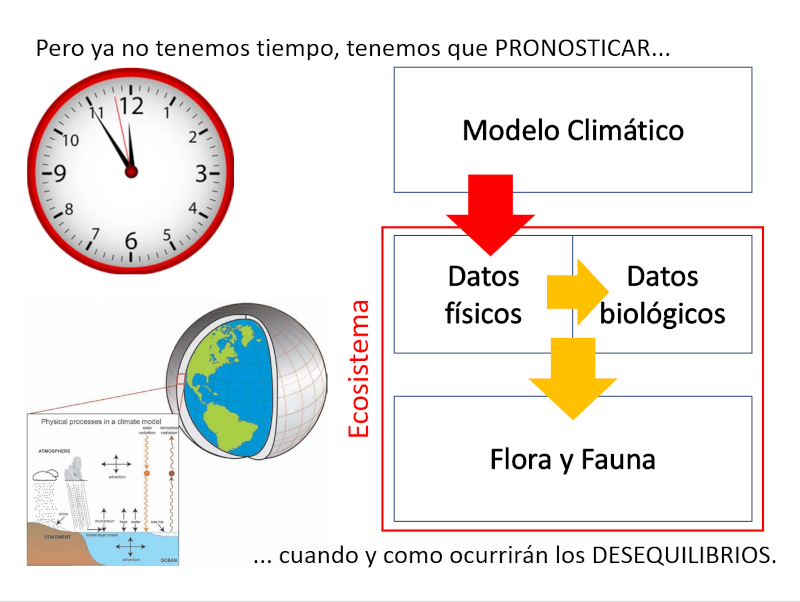
ID:(14257, 0)
Actions to take with the result
Image 
Once the possible problem has been detected, it should be possible to take measures according to the situation that is occurring:
- Prevent: if it still does not occur, you must intervene to prevent the emergence of the imbalance
- Mitigate: if it has already started, measures must be taken to mitigate the effect of the imbalance
- Flexibility: if it is already happening and cannot be avoided, measures must be taken to migrate to a new balance
Measures must be taken to reduce the effect on society, including industry.

ID:(14258, 0)
Know how to forecast
Image 
The first thing is to analyze the existing software packages that allow simulating climate change in the short to medium term.
In particular, it should be verified that they allow forecasting short-medium-term events such as climatic oscillations.
There is a selection of packages that have been used by some institutions working with the IPCC.
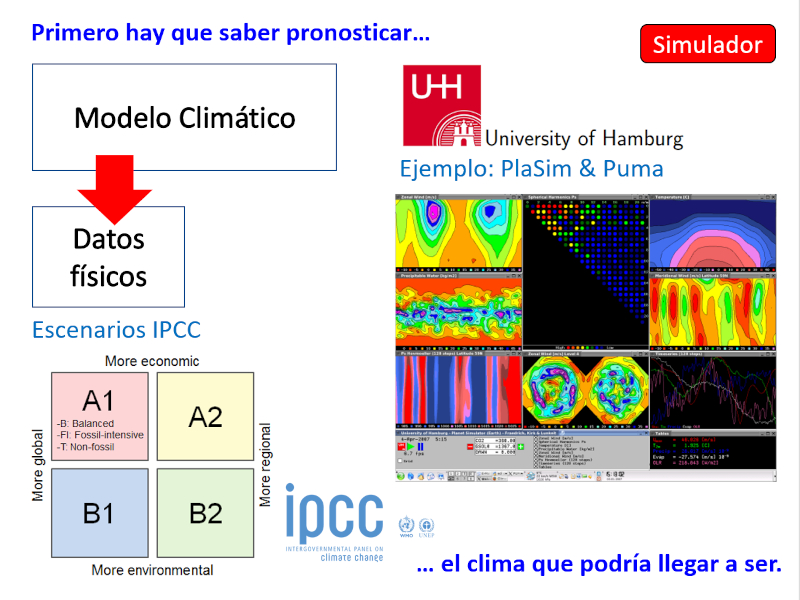
ID:(14260, 0)
Adapt existing software packages
Image 
You must have access to the code of existing packages in order to
- understand how to model
- that must be adapted to what is required to develop

ID:(14261, 0)
Verify simulation
Image 
Simulations that are developed should be evaluated for their likely accuracy/margin of error.
This both for the use of the packages as they are and for the case that adaptations of the models are made in the future.
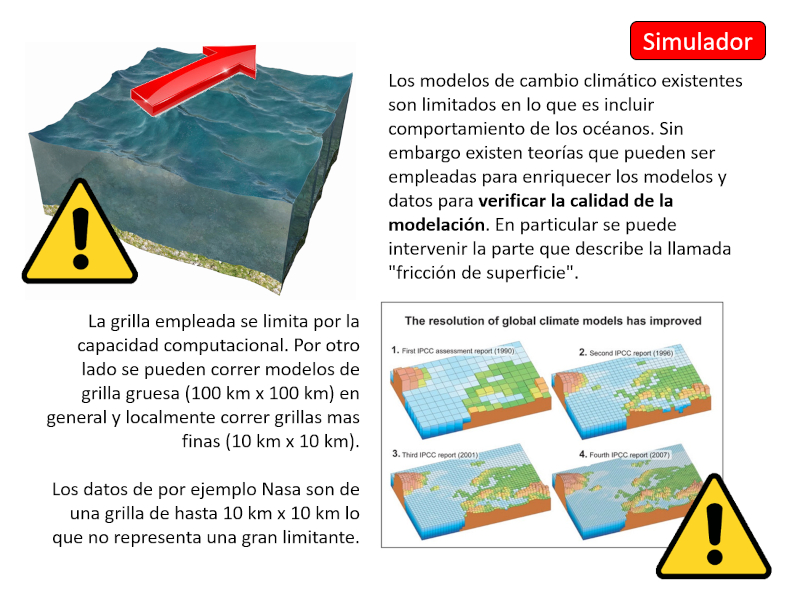
ID:(14262, 0)
AI system for high resolution
Image 
The second problem that exists is that data from climate simulations are generally low resolution. For this reason, it is intended to use a neural network to be able to recognize patterns and thus infer its high resolution version from low resolution data.
In this way, there would be a set of high-resolution ecosystem data (climatic and biochemical data) to model its temporal evolution.
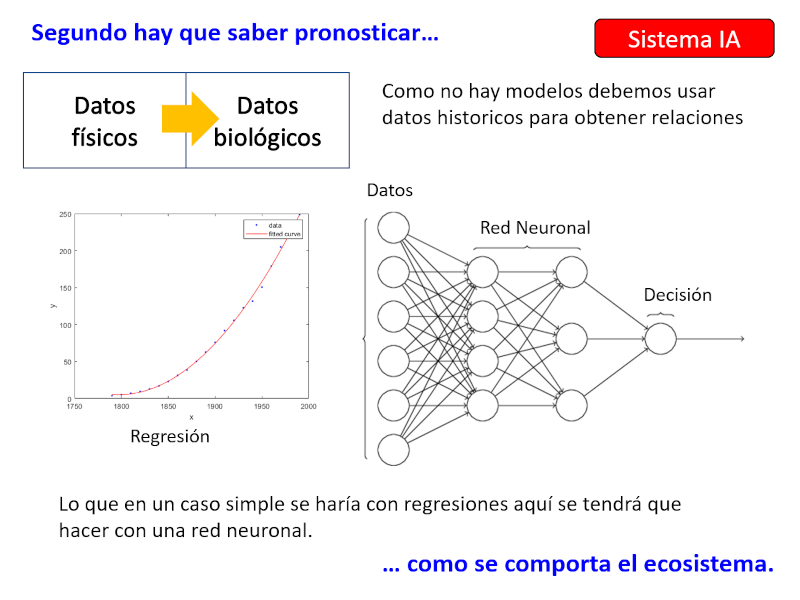
ID:(14263, 0)
AI system for biochemical data
Image 
The main climate forecast models are of physical origin while there are only phenomenological models to estimate biochemical data.
For this reason, artificial intelligence systems are used to correlate physical data with measured biochemical data and thereby extend the physical to the biochemical forecast.
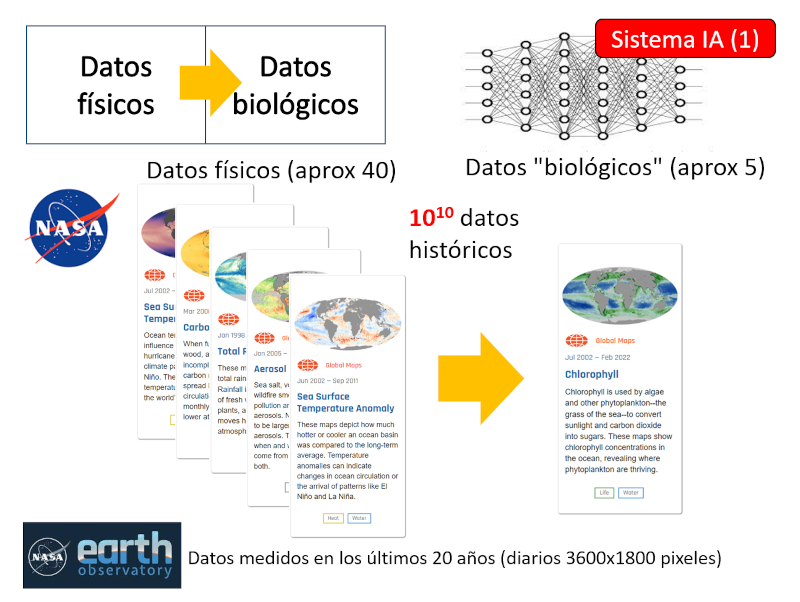
ID:(14264, 0)
The result as probabilities
Image 
The result does not correspond to values but to probabilities that a value results.
The probability distribution can be used to estimate the most likely value.
Probability can also be used to estimate the level of uncertainty and thus the error with which one has to calculate.
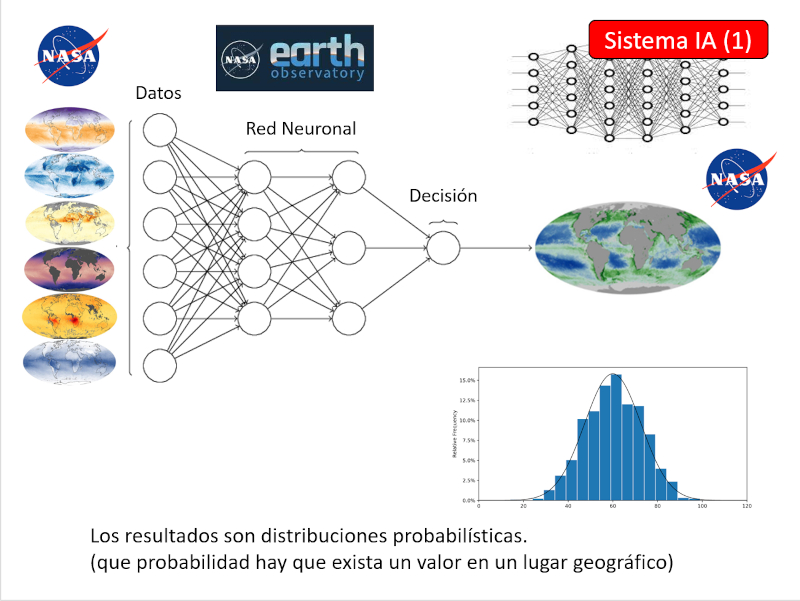
ID:(14265, 0)
Environmental Data Forecast
Image 
The climate simulator together with the neural network models should allow the study of scenarios according to the behavior of the human being and infer the data that describes the ecological system that would result.
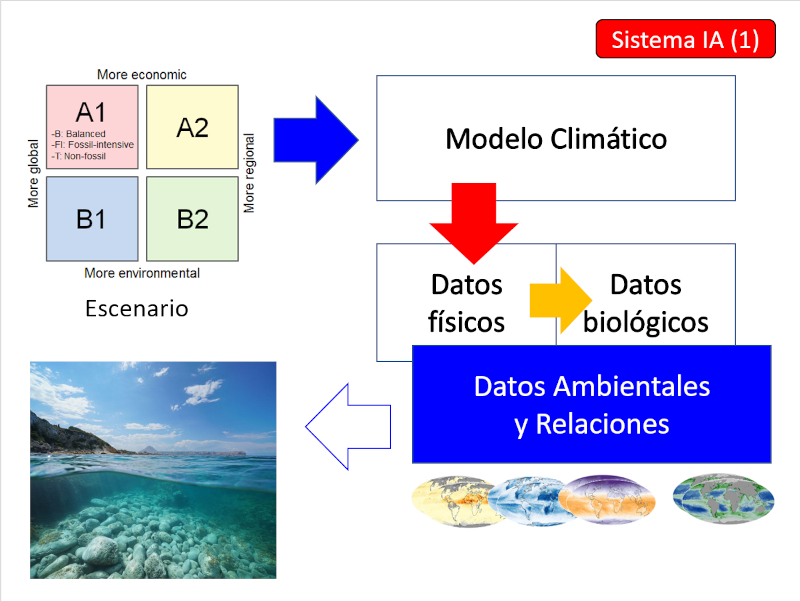
ID:(14266, 0)
Model the ecosystem
Image 
292 / 5,000
Translation results
The ecosystem model must allow reflecting how the different species interact creating synergies or competencies that define their respective domains.
The result is a dynamic balance in which the domain of the different species alternates without any disappearing.

ID:(14267, 0)
Ecosystem data
Image 
In order to model the system, it is necessary to have information on the \'volume\' of each species, that is, some number that reflects its level of presence. This can be units but also parameters such as weight, volume or area they cover.
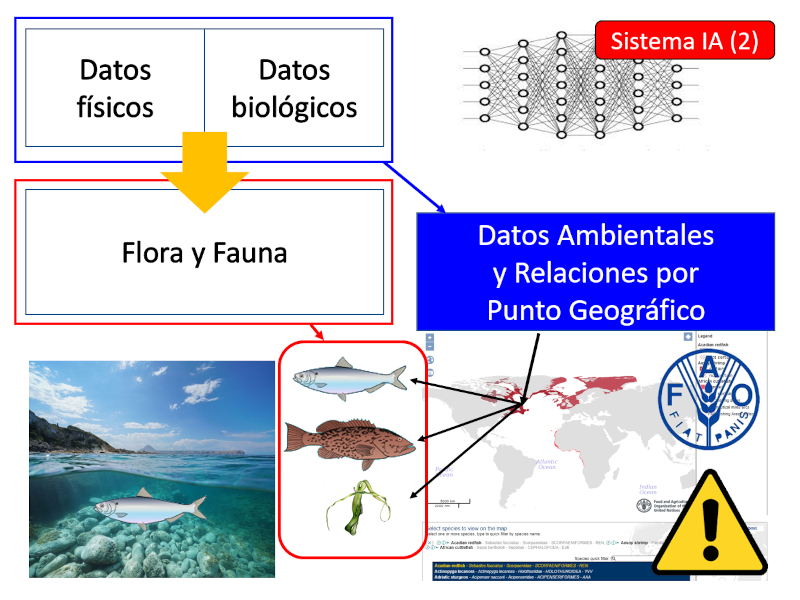
ID:(14268, 0)
Interaction between species
Image 
Keep in mind that you must have all the species that are key to balance. The lack of one can lead to the lack of control mechanism over another.
If necessary, it is possible to introduce \'proxy\' species that represent a species for which there are no data but whose number is directly associated with that of the missing species.
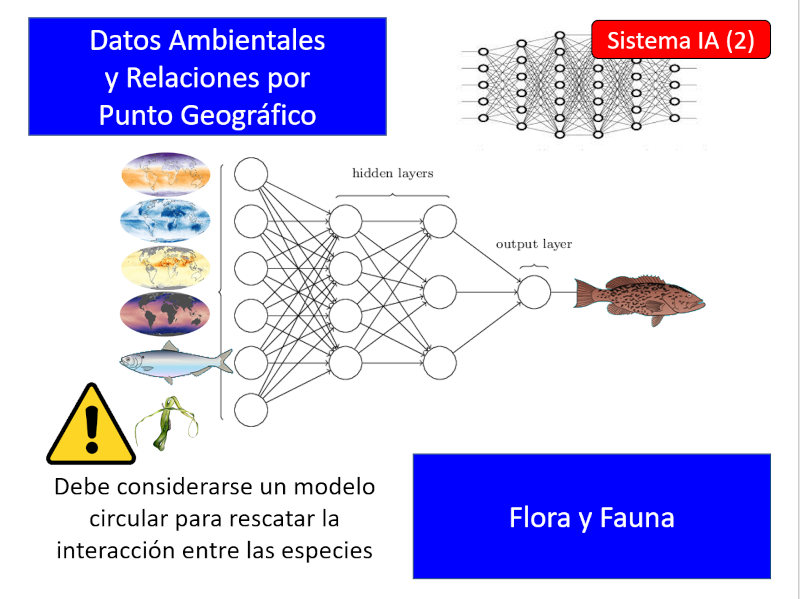
ID:(14269, 0)
Full set and using proxy variables
Image 
In order to model the system, it is necessary to identify all the species that comprise the ecosystem.
Every time a species develops uncontrollably according to the model, it means that we have failed to identify one that controls it and/or a resource without which it cannot develop.
In some cases it is necessary to work with proxy variables, that is, with variables that represent the behavior of the species without being directly related to it.

ID:(14270, 0)
Comprehensive model
Image 
The resulting model is an integral model that associates:
- socio-economic situation
- geographical factors
- climatic behavior
- ecosystem situation
- species behavior
that allows to study
- possible evolutions
- possible imbalances that may arise
- Interventions to be carried out and their effects
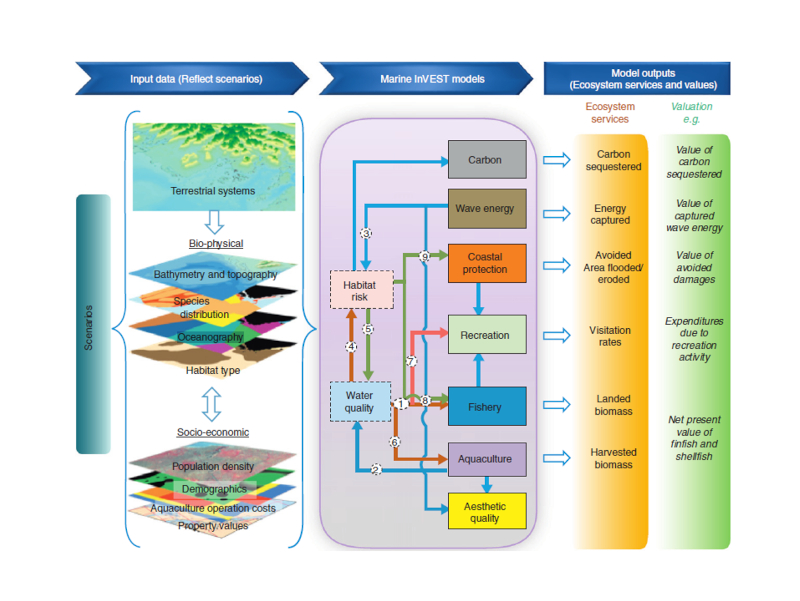
ID:(14271, 0)
Handwork
Image 
The development of the ecosystem model requires manual work to verify that the model is as realistic as possible. This is key to ensuring that the proposed measures are correctly identified and are effective.
This work should be done with researchers/academicians who know the species in detail.
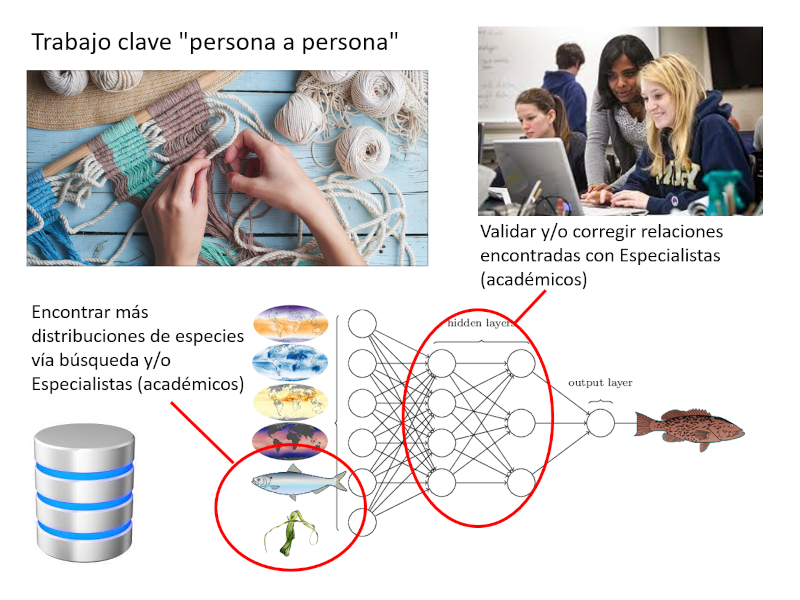
ID:(14272, 0)
Product
Image 
The result is a system that makes it possible to detect eventual imbalances and study the actions that can be taken and their probable effectiveness.
Imbalances will be primarily of two types
- imbalance in the system itself by favoring/harming one species over another due to changes in the ecosystem
- Imbalance due to migration of species from other ecosystems due to changes in the remote system and/or in the considered ecosystem itself.

ID:(14273, 0)
Build a prototype
Image 
The preliminary project consists of developing a simplified model (Lego model type of a real system) to verify that the system is viable and that the level of error is such that the monitoring and early detection system can be effective.
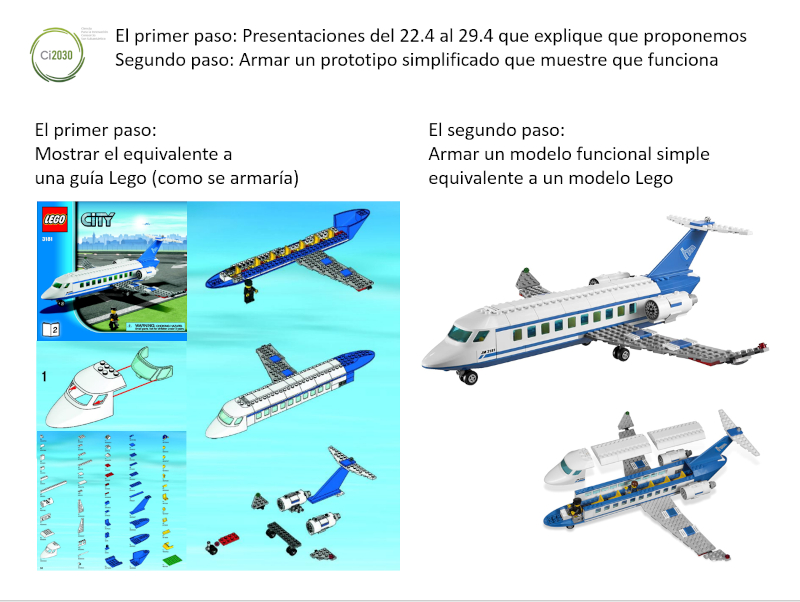
ID:(14274, 0)

